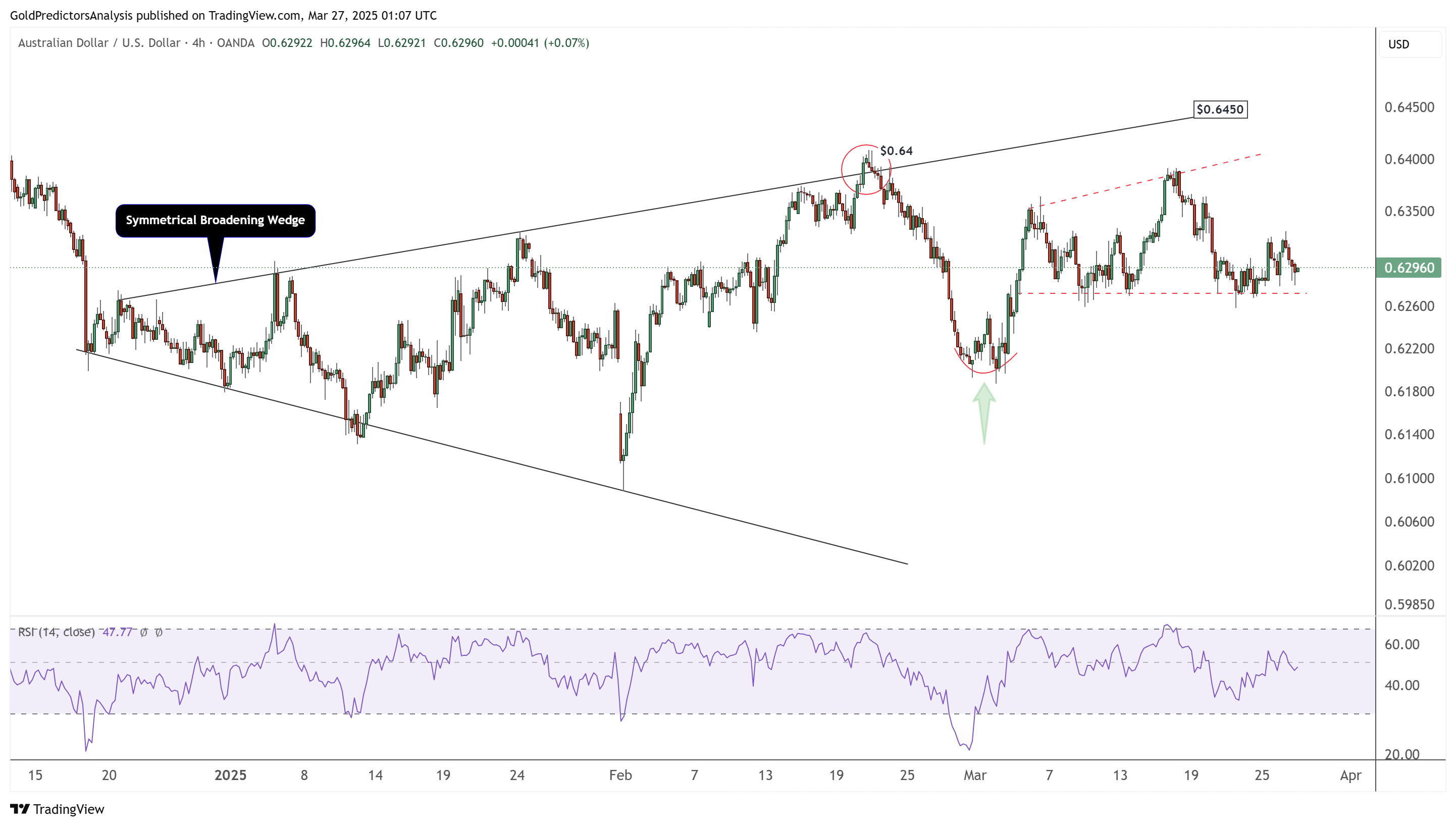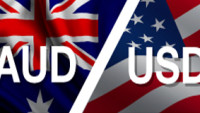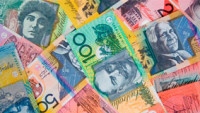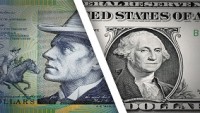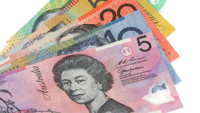 AUD/USD shows price uncertainty within a symmetrical broadening wedge
AUD/USD shows price uncertainty within a symmetrical broadening wedge
The Australian Dollar (AUD) continues to weaken against the US Dollar (USD), trading lower for the second straight day. Currently, risk-off sentiment dominates the market following President Trump’s decision to impose a 25% tariff on auto imports starting April 2. As a result, concerns about global trade disruptions have pressured AUD/USD, with the pair reacting to heightened uncertainty. Additionally, auto parts will face the same tariff no later than May 3, 2025, further adding to market anxiety. However, the overall outlook for AUD/USD remains uncertain, as the market has been trading with high volatility since early 2025. This heightened volatility is reflected in the formation of an ascending broadening wedge pattern.
Despite this uncertainty, the AUD finds some support from rising commodity prices. Trump also suggested possible copper tariffs within weeks, which initially boosted copper prices. As Australia is a major copper exporter, the news provided a short-term lift for the AUD. Expectations of Chinese stimulus further support the currency, given strong trade ties between Australia and China. Measures proposed by China to boost consumption may benefit Australian exports.
RBA Holds Steady as Inflation and Budget Send Mixed Signals
On the other hand, the Reserve Bank of Australia is expected to hold interest rates steady next week. The RBA cut rates by 25 basis points in February—the first cut in four years, as shown in the chart below. Assistant Governor Sarah Hunter emphasized a conservative stance due to global uncertainties. February’s policy statement signalled restraint, especially as inflation remains a concern and US monetary policy becomes more volatile.
The 4-hour chart for AUD/USD shows that the pair is hovering within a symmetrical broadening wedge, indicating uncertainty. Tariff concerns have kept the pair within this pattern, reflecting strong volatility and price instability. In the short term, the pair faces resistance around 0.6450, as shown in the chart below.
